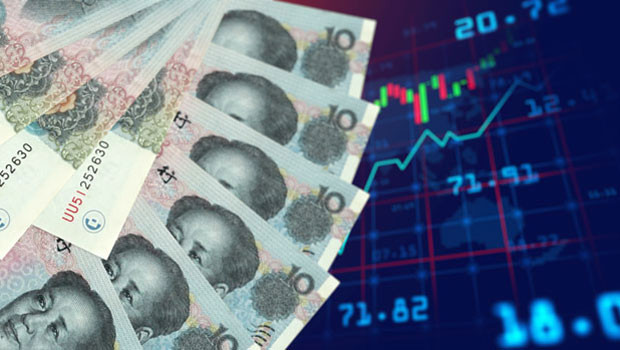Asia report: Markets mixed after China's rate cut surprise

Asia-Pacific markets were a mixed bag on Monday, after China's central bank decided to cut its one-year loan prime rate, while keeping the five-year rate unchanged.
Patrick Munnelly, market analyst at TickMill Group, said disappointment stemming from the People's Bank of China's decision on loan prime rates overshadowed recent support measures implemented by Beijing.
“The Nikkei 225 index experienced a positive trend due to Japan's announcement of the most significant increase in minimum hourly wage on record.
“However, the index briefly wavered in response to China's benchmark rates before rebounding to session highs.
“Conversely, the Hang Seng index faced downward pressure, as did the Shanghai Composite index.”
Munnelly attributed the declines to China's recent support initiatives, which included a meeting between the PBoC and financial regulators with bank executives, encouraging lenders to increase loans in order to bolster economic recovery.
“These efforts were offset by the PBoC's decision to cut the one-year loan prime rates by a narrower-than-expected margin of 10 basis points, compared to an anticipated 15 basis point reduction.
“Additionally, the five-year loan prime rate surprisingly remained unchanged at 4.2%, contrary to the anticipated 15 basis point reduction.”
Japan equities rise, most other markets face declines
In Japan, the Nikkei 225 and the Topix both ended in the green, gaining 0.37% and 0.19% to close at 31,565.64 and 2,241.49, respectively.
Stocks that shone on Tokyo’s benchmark included Sumitomo Dainippon Pharma Co which surged by 4.19%, Tokyo Electric Power Co, up by 4.15%, and Nikon which climbed by 3.44%.
Mainland China's leading markets, the Shanghai Composite and the Shenzhen Component, experienced declines of 1.24% and 1.32%, closing at 3,092.98 and 10,320.39 respectively.
Among the notable decliners in Shanghai were Anhui Genuine New Materials Co, which plummeted by 10.03%, and Beijing Changjiu Logistics, closely following with a dip of 10.02%.
Hong Kong's Hang Seng Index also trended downward, registering a decline of 1.82% to end the day at 17,623.29.
Stocks that faced significant losses there included Orient Overseas International, down 5.63%, Xinyi Solar Holdings, off 5.38%, and China Life Insurance Co, which was down by 3.97%.
South Korea's Kospi showed resilience, gaining 0.17% to settle at 2,508.80.
Hanwha Solutions and SD Biosensor were the day's leaders, marking impressive gains of 7.4% and 6.21% respectively.
Australia's S&P/ASX 200 reported a decrease of 0.46%, closing at 7,115.50, with the notable decliners of the day including Iress, which saw a massive drop of 35.54%, and A2 Milk Company which dipped by 13.56%.]
New Zealand's S&P/NZX 50 faced a decline of 1.31%, settling at 11,458.69.
Pacific Edge witnessed a significant drop of 14.62% while A2 Milk Company saw another hit on its native bourse, dropping by 12.52% in Wellington.
On the currency front, the dollar strengthened on the yen, as well as its Aussie and Kiwi counterparts, registering gains of 0.16%, 0.15%, and 0.19% to trade at JPY 145.62, AUD 1.5633, and NZD 1.6916 respectively.
On the oil front, both Brent crude and West Texas Intermediate futures saw marginal gains, rising by 0.54% to $85.26 and 0.59% to $81.73 respectively.
China's rate cut falls short of expectations; New Zealand faces trade deficit
IIn economic news, a surprising move came from the People’s Bank of China as it announced a rate cut that was smaller than market analysts had predicted.
The one-year loan prime rate received a marginal cut of 10 basis points, to 3.45%, standing in contrast to the widely-expected 15 basis point reduction.
At the same time the five-year loan prime rate, which influences mortgage prices, remained unaltered at 4.2%.
That decision came as a particular surprise to many, especially in light of last week's cut to the medium-term loan rate.
“The underwhelming LPR announcement strengthens our view that the PBoC is unlikely to embrace the much larger rate cuts that would be required to revive credit demand,” said analysts at Capital Economics.
“Hopes for a stimulus-led turnaround in economic activity largely depend on the prospect of greater fiscal support.”
Elsewhere, New Zealand posted a trade deficit for the first time since March, with the deficit for July standing at NZD 1.1bn - a contrast to the NZD 9m surplus seen in June.
A deeper dive into the figures showed a 14% drop in exports year-on-year, rounding off to NZD 5.5bn, whereas imports saw a steeper decline of 16% from the prior year, amounting to NZD 6.6bn.
Finally on data, Thailand's year-on-year economic growth for the second quarter came in at a modest 1.8% - noticeably short of the 3.1% growth anticipated by economists surveyed by Reuters.
It was also a dip from the 2.6% growth seen in the prior quarter.
Reporting by Josh White for Sharecast.com.